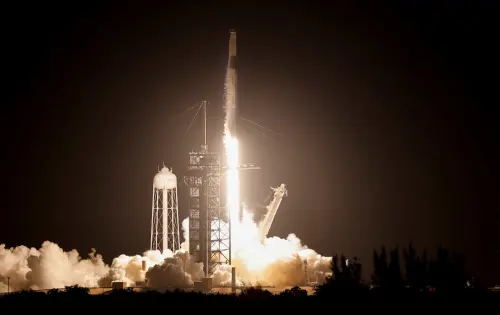SpaceX launched a crew of four private astronauts on a mission to orbit Earth from pole to pole, a unique trajectory previously unexplored by humans. The mission, named Fram2, is led by Chun Wang, a Maltese investor and crypto entrepreneur who founded a bitcoin mining company.
Wang and his three associates launched aboard SpaceX's Crew Dragon capsule at 9:47 p.m. EDT from NASA's Kennedy Space Center in Florida. This free-flying mission will last three to five days, during which the crew will conduct 22 research experiments focused on the effects of spaceflight and microgravity on the human body.
On the day of the launch, the four crew members traveled to the launchpad in a caravan of Teslas, escorted by police, as a SpaceX Falcon 9 rocket launched overhead on a separate Starlink mission. Wang shared a video on X, the social media platform owned by Musk, captioning it, "We're gonna watch a rocket launch while on our way to a rocket launch."
This mission marks SpaceX's sixth private astronaut flight, further solidifying its position in the global human spaceflight sector. It comes as Elon Musk's influence as SpaceX CEO and the world's richest man grows, particularly in his advisory role to the U.S. President, giving him significant sway over various policy matters.
Fram2 is the 16th crewed mission using the reusable Crew Dragon, developed with NASA funding to transport astronauts to and from the International Space Station. SpaceX's Dragon spacecraft has led the emerging market for private orbital spaceflight, initially attracting wealthy tourists. With flight costs around $55 million per seat, the market now includes government astronauts seeking national prestige and enhanced domestic spaceflight capabilities.
The Fram2 crew, however, is not backed by government funding. Wang's team includes Jannicke Mikkelsen, a Norwegian film director specializing in virtual reality; Rabea Rogge, a German robotics researcher and polar scientist; and Eric Philips, an Australian adventurer known for his ambitious skiing expeditions in extreme polar conditions.
